Thirty years ago, the Kansas City Fed persevered through one of the most challenging times in its existence, when the Oklahoma City bombing tore through the Alfred P. Murrah Federal Building on the morning of April 19, 1995. The Oklahoma City Branch building was a block and a half away from the site and was not unscathed.
“There are so many things I would not remember from 30 years ago, but I don’t think I will ever forget that day,” said Lori Zuchnik, senior administrative assistant in Supervision and Risk Management, who worked in human resources at the time at the Oklahoma City Branch.
Despite orders to evacuate the building following the attack, the Oklahoma City Branch office remained operational. Keeping checks moving and ensuring a sufficient supply of cash to Oklahomans during the investigation and clean-up was central to the Bank’s mission.
“We are a bank that will not be left unguarded,” then Public Affairs manager Stan Mengel told the Kansas City Star.
April 19, 1995
Zuchnik was on the phone with an employee talking about benefits when the bomb exploded. She remembers not only feeling the blast, but so did the person on the phone who lived on the south side of town.
“She said her plates fell off her wall and I knew she lived at least 10 miles away,” Zuchnik said. “The HR staff were working on the third floor at the time, and we could tell there was some type of explosion based on the amount of heavy, black smoke.”
Earlier that morning Michael Combs, vice president in Supervision Product Management, parked his car on the south side of the Murrah building and walked by it around 7:30 a.m. on his way to the Branch where he was a bank examiner. It was about 90 minutes later when the whole building shook.
“To me it felt like a reverberating boom,” he said. “Ceiling tiles got thrown around me…a lot of chaos.”
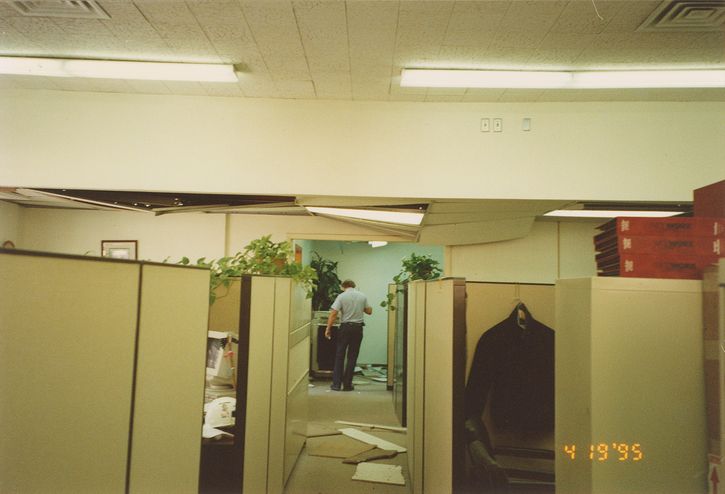
Ceiling tiles falling from above.
Combs and other staff members were quickly marshalled to the stairwells by the designated floor wardens and headed downstairs. He remembered there was glass everywhere and a bank law enforcement officer was standing with a rifle to protect them.
“We started to hear trickling information about what was happening,” he said, adding there were no smartphones or ways to quickly find out what was happening then.
Josias Aleman, executive vice president of the Payments and Strategy Division, was working on the second floor where he was an analyst in the check collection department. Suddenly, he said the whole building shook and ceiling tiles were falling to the floor.
“We were doing construction at the time, so my first thought was the crane fell on the building,” he said. “We went outside, and you saw people streaming out of buildings. It was pretty much pandemonium downtown.”
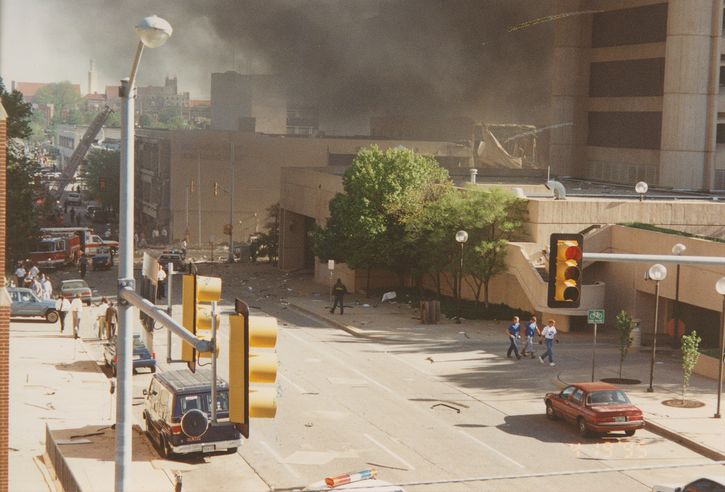
A view of the aftermath following the bombing.
'The Fed is open'
During this time of uncertainty, one thing remained the same: the Federal Reserve stayed open. The cash operations and check processing functions continued the important business as usual, even when it was anything but usual.
“The statement that day was the Fed is open and operating and it’s a boost of confidence to the public that we are open in times of crisis and stress,” Combs said.
“When you have a tragic event befall the country, pretty quickly our mind turns to how can we promote stability in this time of uncertainty?” Aleman said. “You recognize anything can happen anywhere, but what strikes me is the way our employees rise to the moment.”
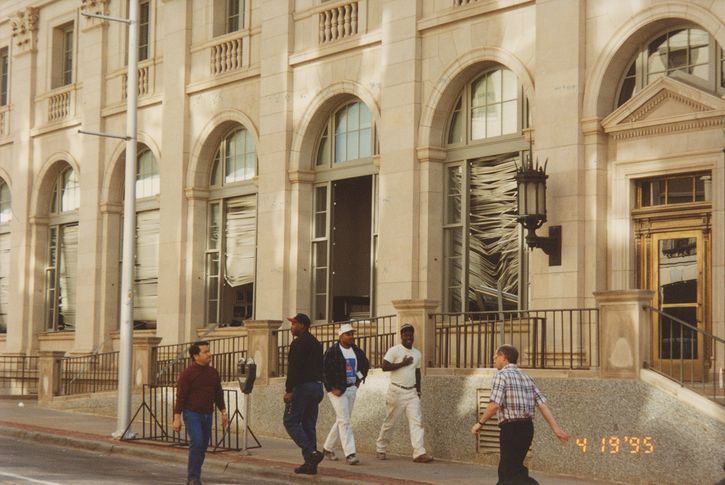
Combs and Zuchnik continue to work at the Oklahoma City Branch, while Aleman is in Kansas City. All agree the quick thinking of management attributed to everyone getting out of the building safe while continuing to do the important work of the Federal Reserve. Employees were sent to an external staging site and then sent home. Meanwhile, only designated employees could access the building with a letter from the FBI. Aleman was one of them and still has that letter to this day.
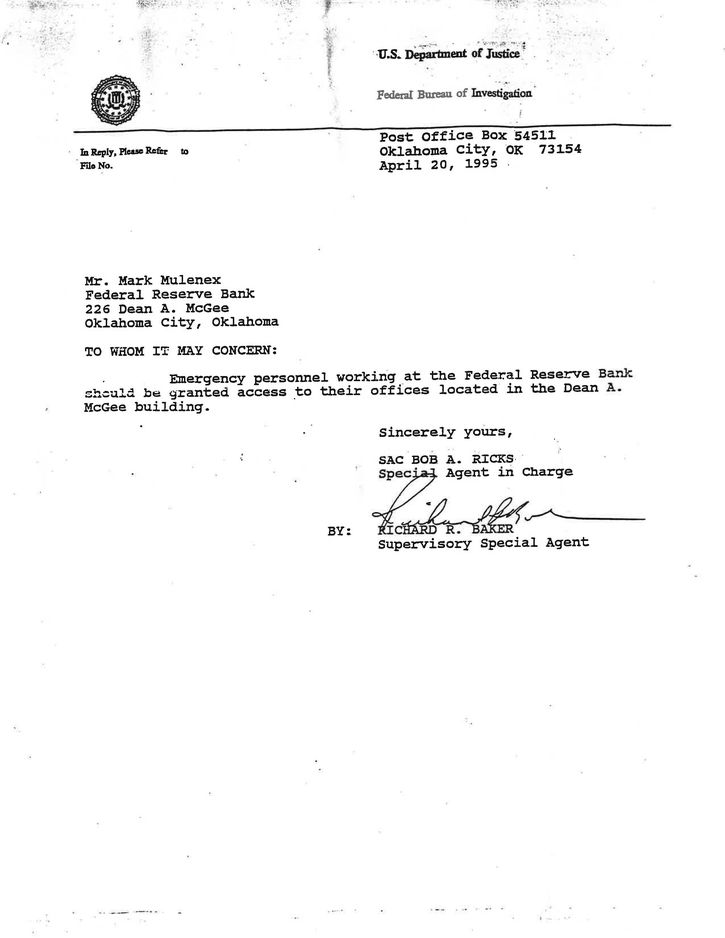
Aleman's letter to get into the building.
“We spent the next two to three days driving a van and shuttling checks to continue to support payments processing,” he said.
Because Combs vehicle was parked by the Murrah building, it was still part of a crime scene, and he didn’t get it back for weeks. In addition, he was questioned by the FBI as they tried to piece things together. They wanted to know if he saw anything when he walked by the Murrah building early that morning.
“I had no idea how they found me, but I received a call on my home line, I had no time to prep. They wanted to know what I saw as I walked by the building at 7:30 a.m., it was a little intimidating as a young professional being interviewed by the FBI.”
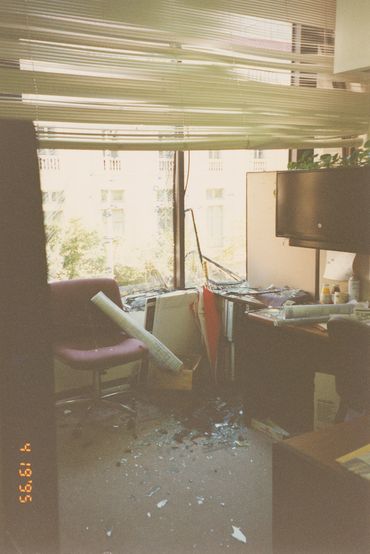
Broken glass from Branch offices.
Zuchnik recalls the usual jovial law enforcement officer being very serious and she was grateful they had law enforcement at that time. She went outside and the air was covered in heavy, black smoke and people were covered in soot. She vividly remembers the community coming together afterwards.
“I was so proud of Oklahoma,” she said. “People really came together and really showed the heart of Oklahoma.”
“To be in such close proximity to a tragedy, it is definitely impactful for the Oklahoma City community and how everyone pulled together to support each other,” Combs added.
“How do we do the important work we’re called to do? We are always resilient, always stepping up to the challenge, always mission-focused,” Aleman said.
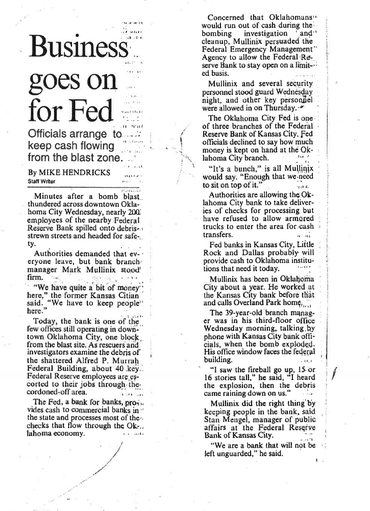
"A Kansas City Star article published April 21, 1995, interviewed Kansas City Fed employees after the attack."
In 2014 the Oklahoma City Branch moved to its now current location in Leadership Square. In 2017, The Kansas City Fed received two American elm saplings from the External LinkOklahoma City Survivor Tree, which endured the bombing and remains standing today. The saplings have grown, and the trees now stand in Kansas City and Omaha. The Oklahoma City Branch does not have one for lack of green space. The saplings were grown from seeds harvested from the tree, which is now part of the External LinkOklahoma City Memorial and Museum.
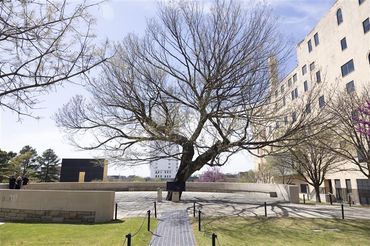
The Survivor Tree today in Oklahoma City.
